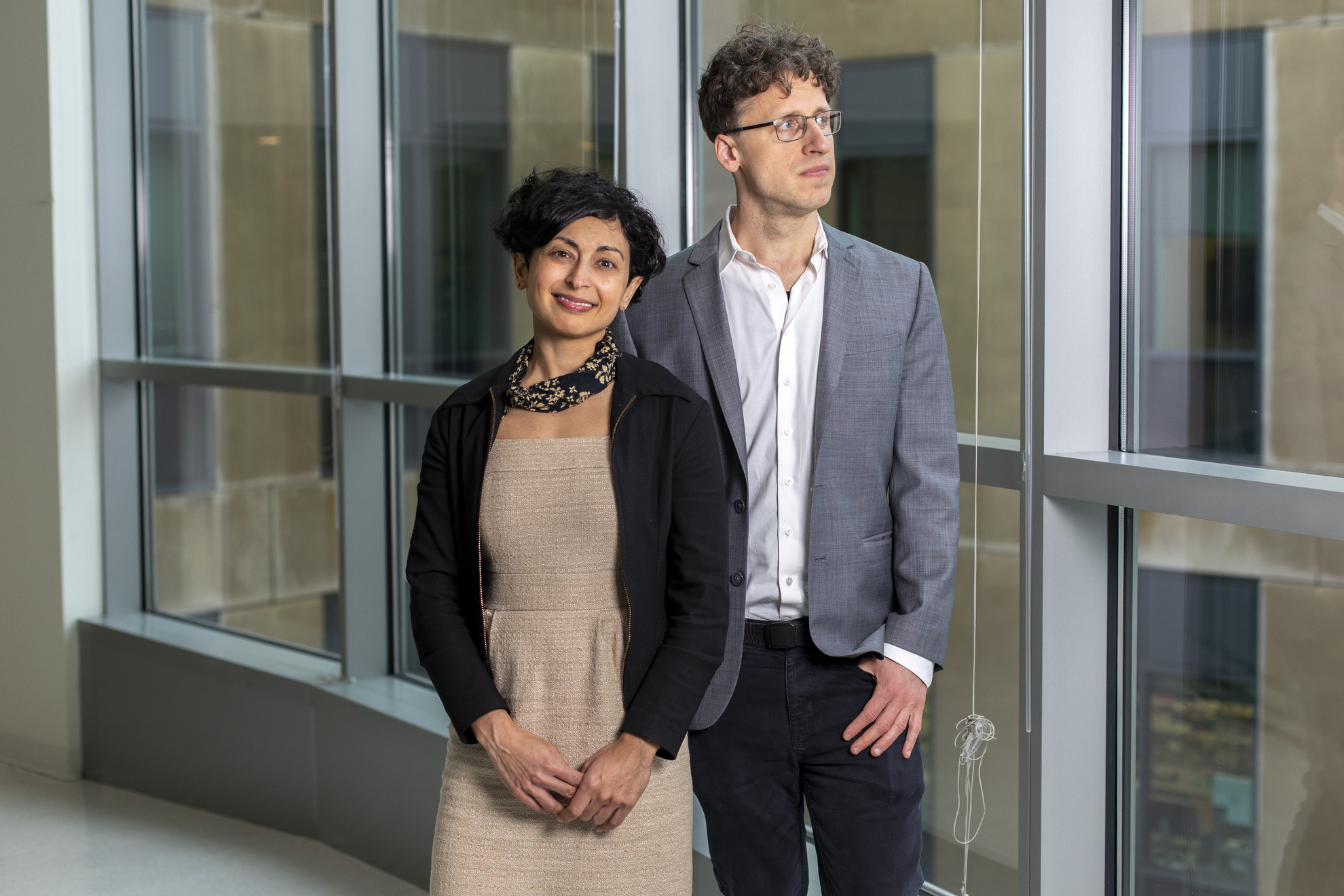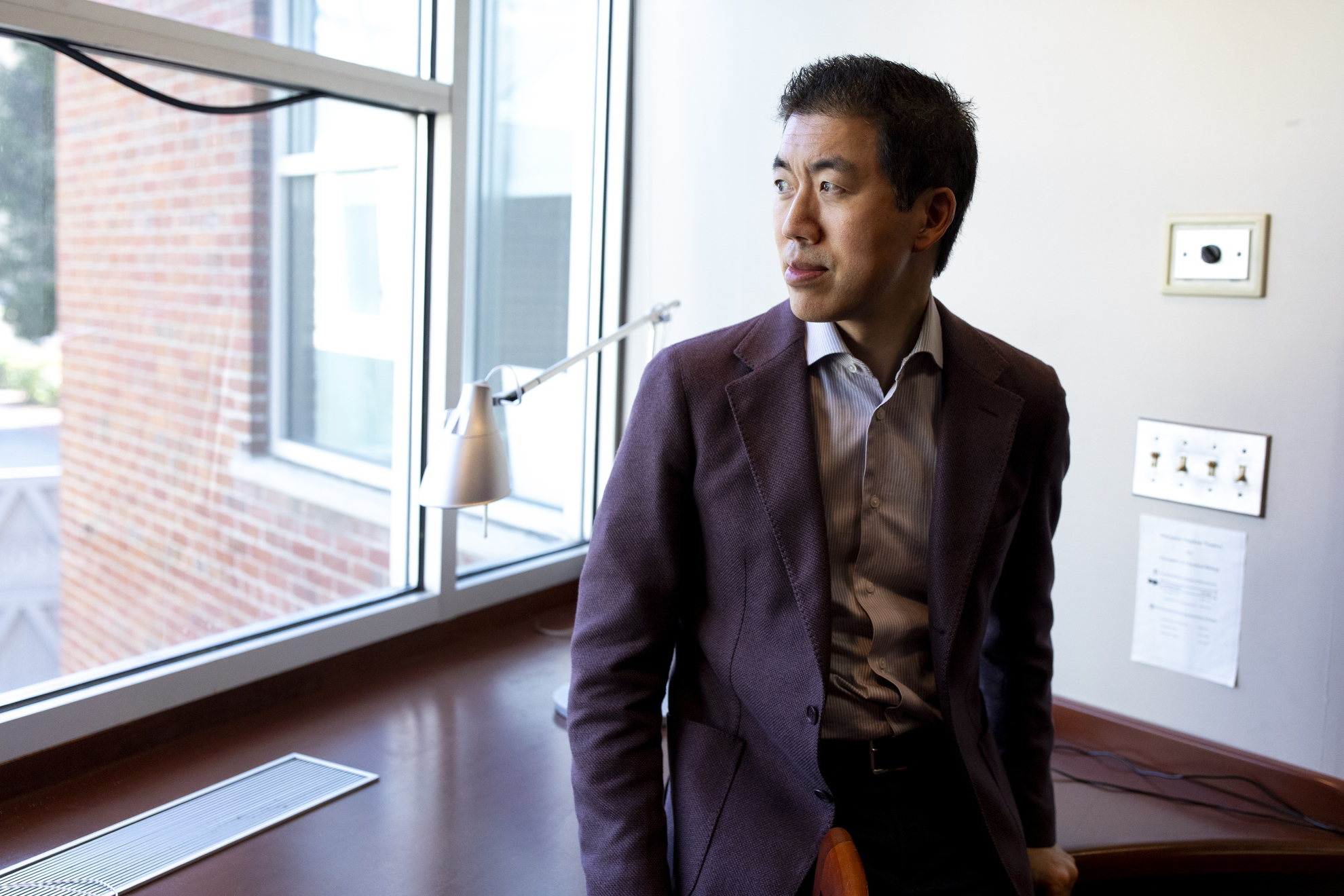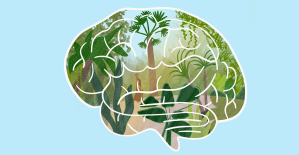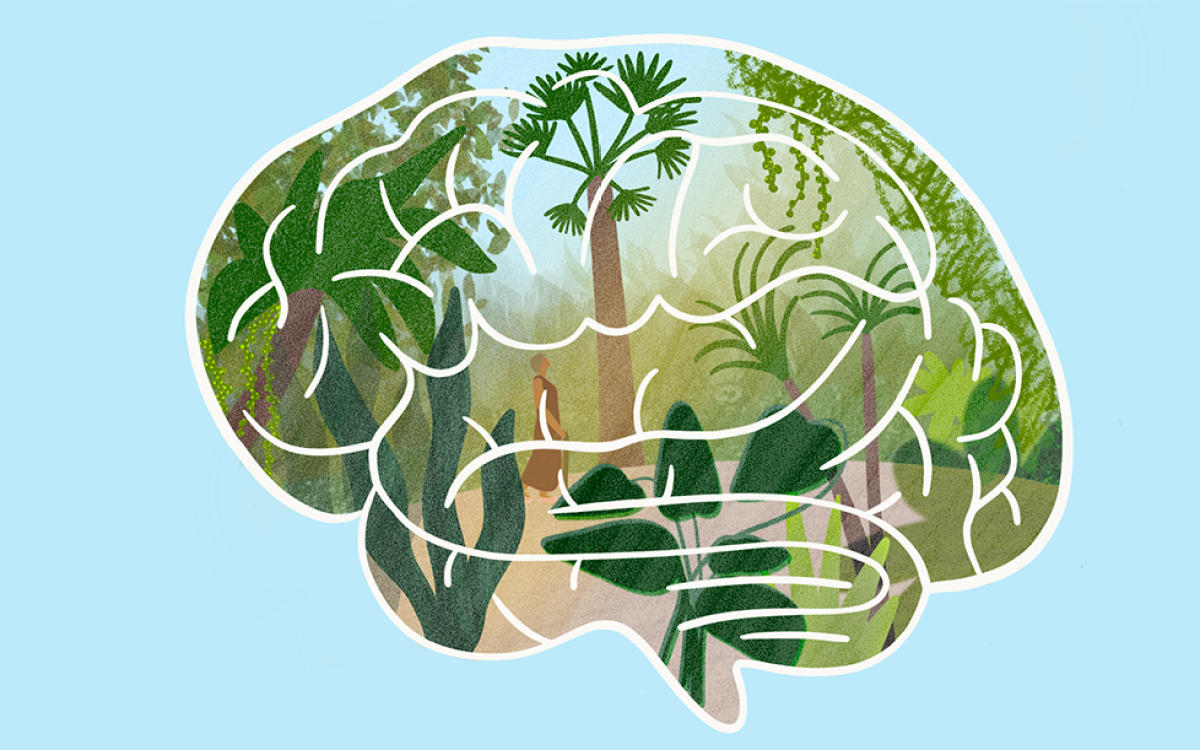
Sonia Vallabh and Eric Minikel.
Photos by Veasey Conway/Harvard Staff Photographer
Team hits milestone toward prion disease treatment. For them, it’s personal.
Patient-scientist, husband among researchers who developed promising gene-editing therapy for rare, fatal condition
New research provides hope that prion disease — a handful of rare, invariably fatal disorders caused by misfolded proteins in the brain — may, in the not-too-distant future, have a treatment if not a cure.
The work, published early this year in the journal Nature Medicine, showed that altering a single base in the gene that produces the killer proteins can reduce by half the amount of that protein in the brains of laboratory mice, a step that extended their lifespans 52 percent.
Authors of the work, at the Broad Institute of MIT and Harvard, caution that several potentially lengthy steps remain before human trials of the technique can be undertaken. Still, they agreed that the results indicate the pathway that they embarked upon nine years ago toward effective treatment in humans appears promising.
“I think it’s a milestone for sure,” said David Liu, senior author of the paper, in whose lab the base editing technology was developed. “One has to be careful to recognize that the path to an actual clinical trial has many such milestones that have to be traversed.”
Prion disease includes several conditions that lead to brain damage and dementia, including Creutzfeldt-Jakob disease, Gerstmann-Sträussler-Scheinker disease, and fatal familial insomnia. About 15 percent of cases are due to an inherited mutation in the prion protein gene, while 85 percent are “sporadic,” occurring when these proteins spontaneously fold into abnormal, toxic shapes.
‘Personal’ mission for scientist who is also a patient
While laboratory work is often remote from the patients it is intended to help, these experiments are part of a personal mission for several of the papers’ authors. That’s because one of them, HMS Assistant Professor of Neurology Sonia Vallabh, has tested positive for an inherited form of prion disease called fatal familial insomnia.
In late 2010, Vallabh’s mother died of a mysterious, degenerative condition that subsequent tests would confirm as fatal familial insomnia. Not long after, Vallabh herself tested positive for the disease-causing mutation. That prompted Vallabh, who had graduated from Harvard Law School, and her husband, Eric Minikel, who holds a planning degree from MIT, to retrain for careers centered on understanding and developing a treatment for prion disease. Today, the pair run their own lab at the Broad, employing 14 researchers. In a relatively short time, Liu said, they have become experts on the therapeutically relevant aspects of the condition.
“It’s an incredible privilege to be able to work with them,” said Liu, the Thomas Dudley Cabot Professor of the Natural Sciences in Harvard’s Faculty of Arts and Sciences and a core institute member at the Broad. “Their personal connection to the disease provides extraordinary motivation for everybody to try to make as much progress as we can — carefully, but as efficiently as possible.”

The encouraging results build on discoveries in Liu’s lab, which pioneered the single base editing technique used in the experiments. That technique has been used in 13 clinical trials, Liu said, and has benefited patients suffering from hypercholesterolemia, sickle cell disease, T-cell leukemia, and beta thalassemia.
“David took us seriously long before anyone had much reason to, so we’ve had a collaboration with him for a good while,” said Minikel, who is also assistant professor of neurology at Harvard Medical School. “It’s been a perfect collaboration in the sense that Sonia and I have always felt like we care a lot about this disease, but we’re not technology development people. We’ll say, ‘Here’s the models and assays and the tools needed to develop a drug for this disease,’ but we’re probably not the ones who are going to make the drug.”
In the current work, researchers used a mouse model of human prion disease, which increases the chance the work will successfully translate to humans. The research — funded by the National Institutes of Health, the Broad, the Prion Alliance, and the Howard Hughes Medical Institute — involved inserting a genetic base editor developed in Liu’s lab into adeno-associated virus, which acts as a vector that homes in on cells and inserts its DNA cargo into their genomes. That rewrites the cellular instructions for producing the protein, in this case halting production.
“Having a friend, a collaborator, who could benefit from this treatment really does a lot on the personal motivation side.”
Meirui An
Meirui An, a graduate student in Liu’s lab and one of the paper’s first authors, said that sometimes the vector itself can cause illness, so to improve safety researchers tweaked that part of the process, ultimately seeing a 63 percent reduction in prion protein production despite using a significantly lower dose of the vector virus.
The prion’s dangerous, infectious nature may make this research among the last conducted with human prion protein, Liu said. Such research was restricted after an accidental exposure in a French lab led to a researchers’ death from prion disease.
Human trials of any therapy that might emerge from the work remain several years away, Liu said. Whatever the needed intervening steps turn out to be, researchers said they will likely include refinement of the base editor — which is so large that it has to be transported into cells in two separate viral capsules — improved targeting to reduce its integration into the cells of other tissue types, and improved efficiency in reducing production of prion protein.
An and others praised the collaborative process between the labs involved, which included that of the Broad’s Benjamin Deverman, who specializes in vector engineering.
“Our exchanges have been really frequent and to me, personally, it’s extremely inspiring to work with patient-scientists,” An said. “I don’t need to find any external source of motivation to work on this project because just having a friend, a collaborator, who could benefit from this treatment really does a lot on the personal motivation side.”





